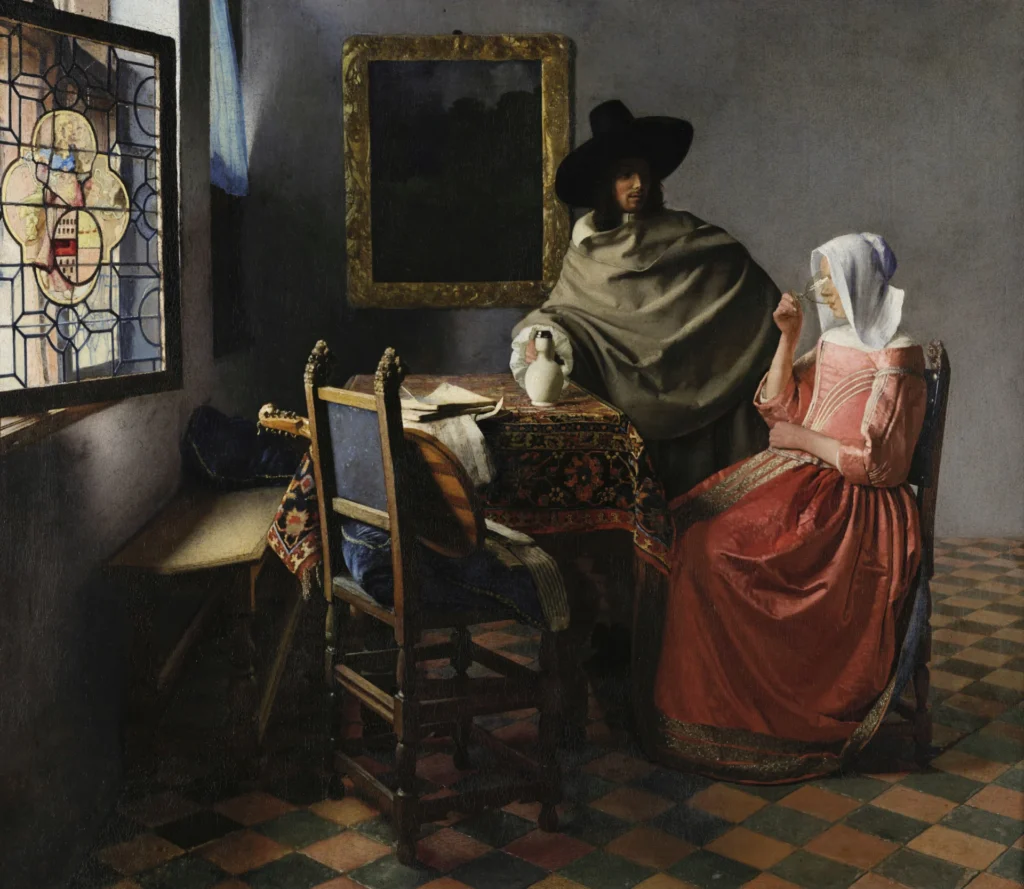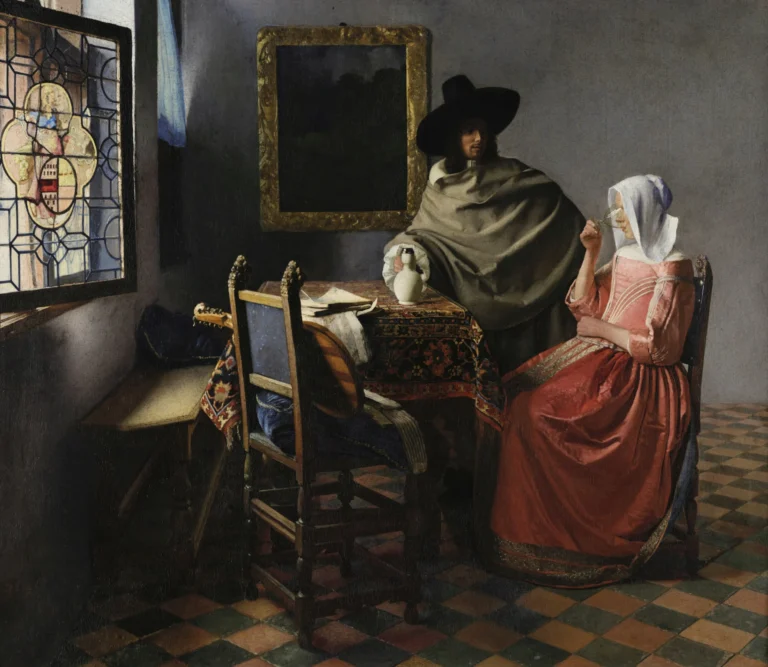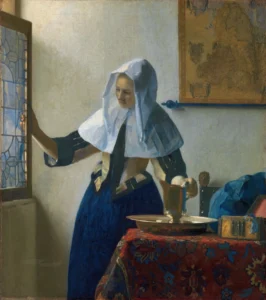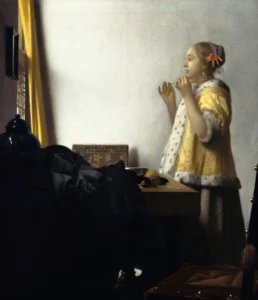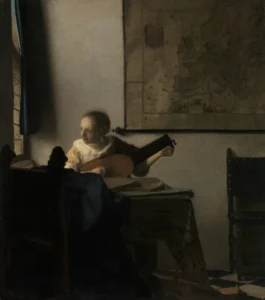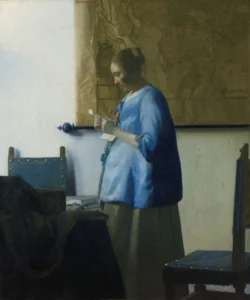The Wine Glass (1658-1660)
The Wine Glass, created by the renowned Dutch painter Johannes Vermeer between 1658 and 1660, portrays a solitary moment of apparent courtship in an elegantly furnished interior. The seated woman, holding a wine glass, and the standing man, poised to pour her more wine, encapsulate the tensions between seduction and decorum. Powerful symbolic elements, such as the musical instruments signifying romance and the emblem of Temperance in the stained glass window, provide a nuanced backdrop to their interaction.
1658 - 1660
About the Artwork
This captivating artwork reflects the intricate dynamics of social interactions in the 17th century, particularly between genders. At a time when women were cautioned against indulgence, Vermeer subtly depicts the tension of temptation through the woman's drained glass, creating an air of ambiguity surrounding her relationship with the man. With characters suggestive of courtship, the painting invites a deeper exploration of their intentions and the societal norms of the time. Vermeer's meticulous technique, particularly his ability to portray light and texture, further enhances the inviting yet complex atmosphere of the scene.
Did You Know
Liked what you see? Add it to your collection.
Enjoyed reading? Share it.
... continued
The Wine Glass
also known as The Glass of Wine or in Dutch Het glas wijn, is an oil-on-canvas painting created by Johannes Vermeer between 1658 and 1660. Here are some key points about the painting:
Composition and Setting
The painting depicts a seated woman and a standing man in an elegant interior setting. The scene is characterized by a brightly lit and spacious room, typical of the genre painting conventions of the Delft School, which was influenced by Pieter de Hooch.
Figures and Interaction
The woman is shown holding a wine glass, having just drained it, while the man stands beside her, seemingly eager to pour her more wine. This interaction suggests a scene of courtship, but the roles and intentions of the figures are ambiguous. The man's actions could be interpreted as an attempt to get the woman intoxicated, which was considered a forbidden pleasure for women at the time.
Symbolism and Details
The painting includes several symbolic elements. A cittern (a musical instrument) and musical notebooks are placed on a chair, adding a musical and possibly romantic undertone. The stained glass window in the background features an emblem of Temperance, which contrasts with the act of drinking wine, highlighting themes of moderation and temptation.
Style and Technique
Vermeer's brushwork in The Wine Glass is subdued, with smooth outlines used for the faces and clothes of the figures. The painting showcases Vermeer’s mastery of light and texture, with fine and detailed brush strokes evident in the tapestry of the tablecloth and the window glass. This work is considered one of Vermeer’s first fully mature pieces, demonstrating his refinement and elegance in depicting domestic scenes.
Art Historical Context
The Wine Glass reflects Vermeer’s development of the ideas initiated by Pieter de Hooch, but it also breaks away from De Hooch’s prototypes by depicting a more elegant and higher-class setting. The painting shares elements with other Vermeer works, such as The Girl with the Wine Glass and A Girl Asleep, particularly in the use of similar props like the wine pitcher and the stained-glass windows.
Current Location
The painting is housed in the Gemäldegalerie in Berlin, Germany.
Overall, The Wine Glass is a nuanced and intricate work that invites the viewer to interpret the complex interactions and symbolism within the scene.




